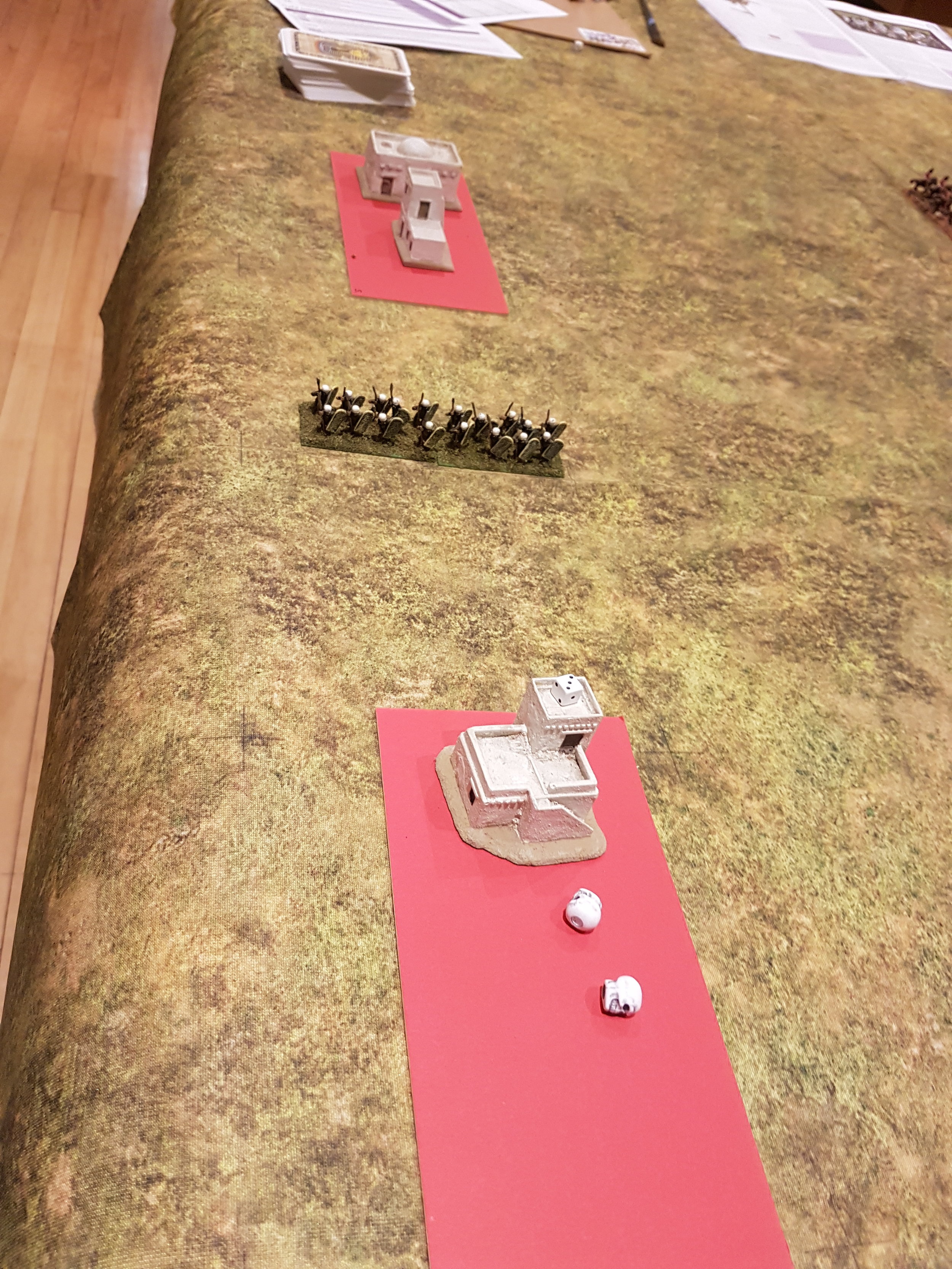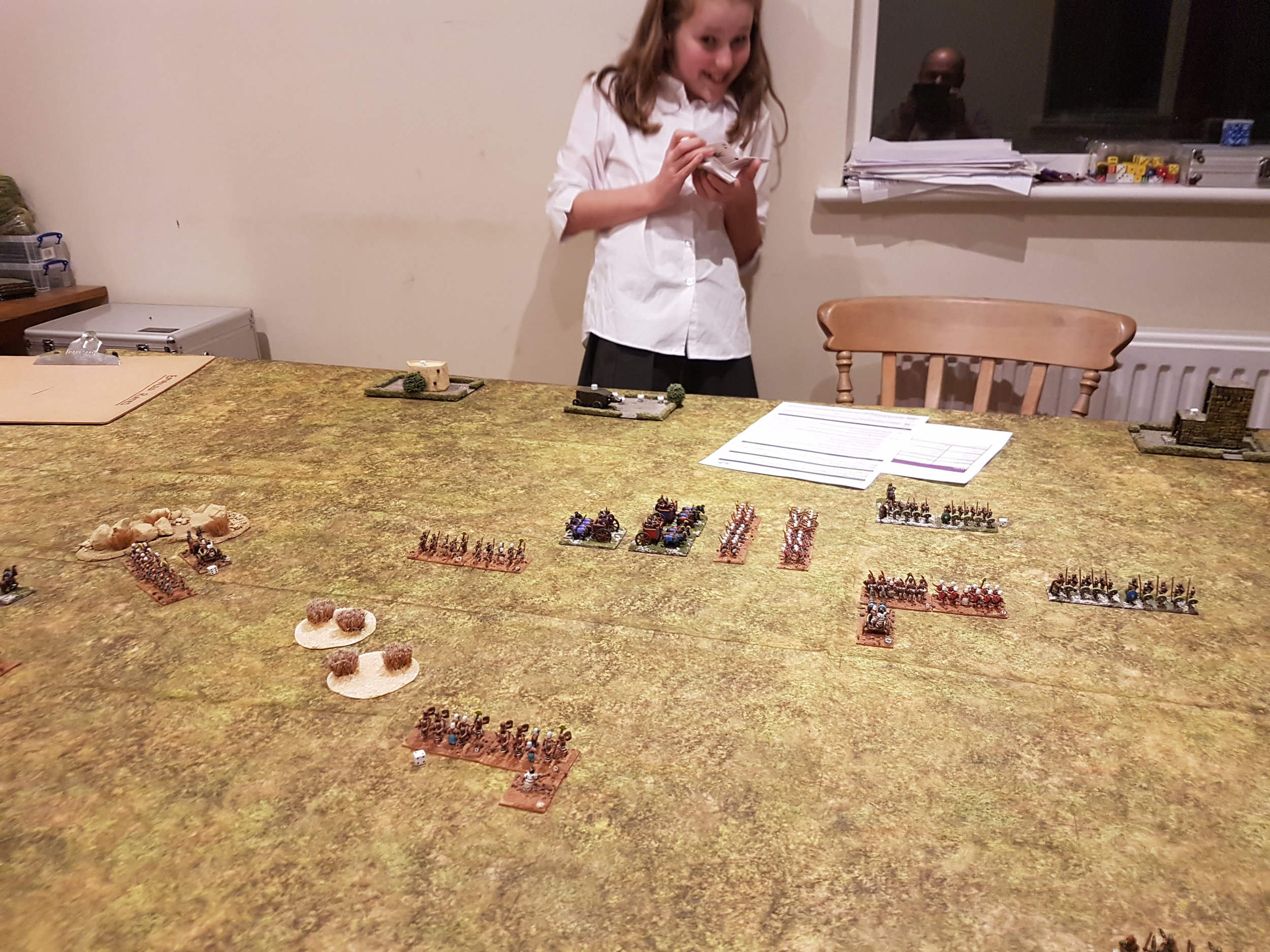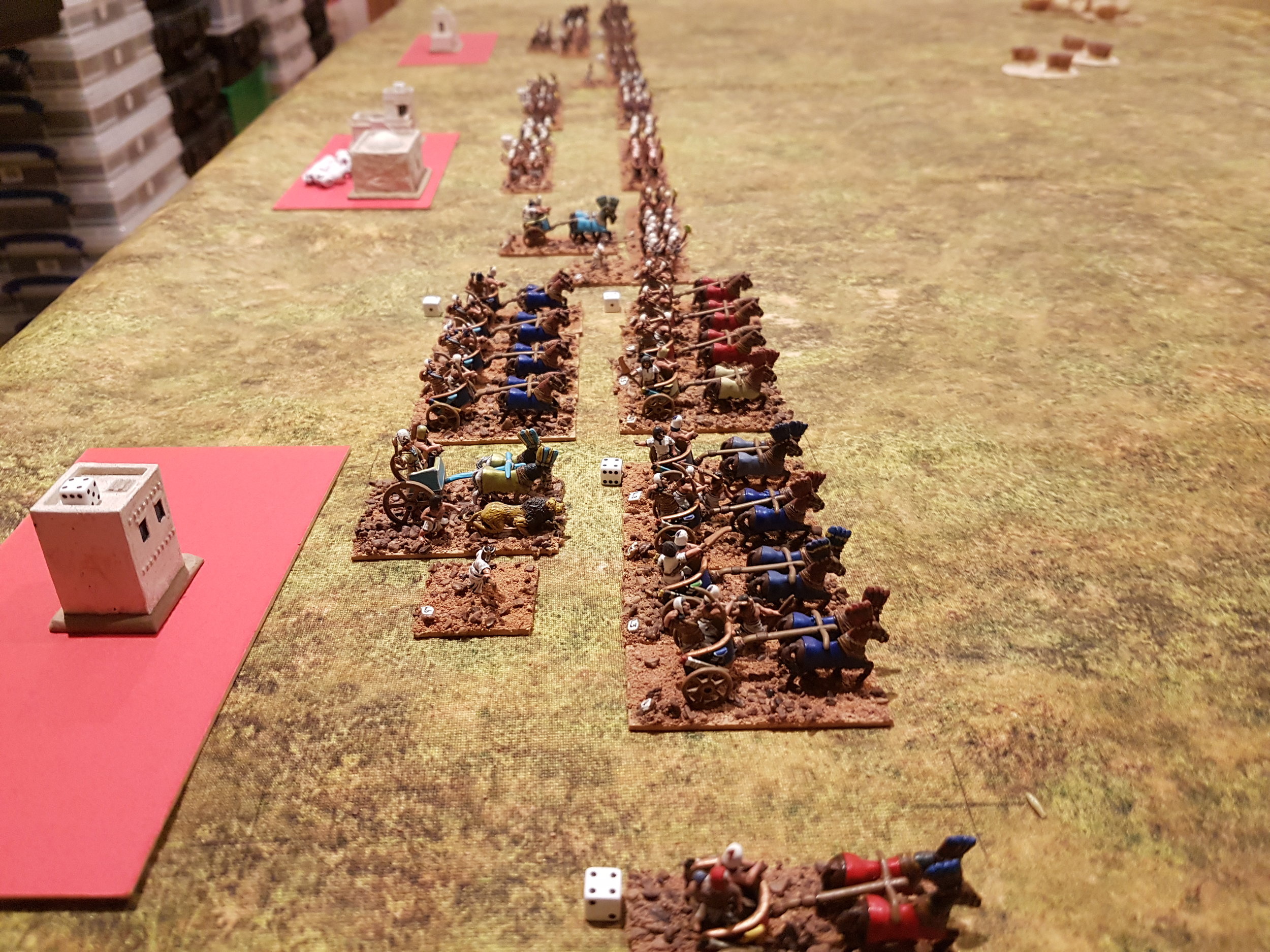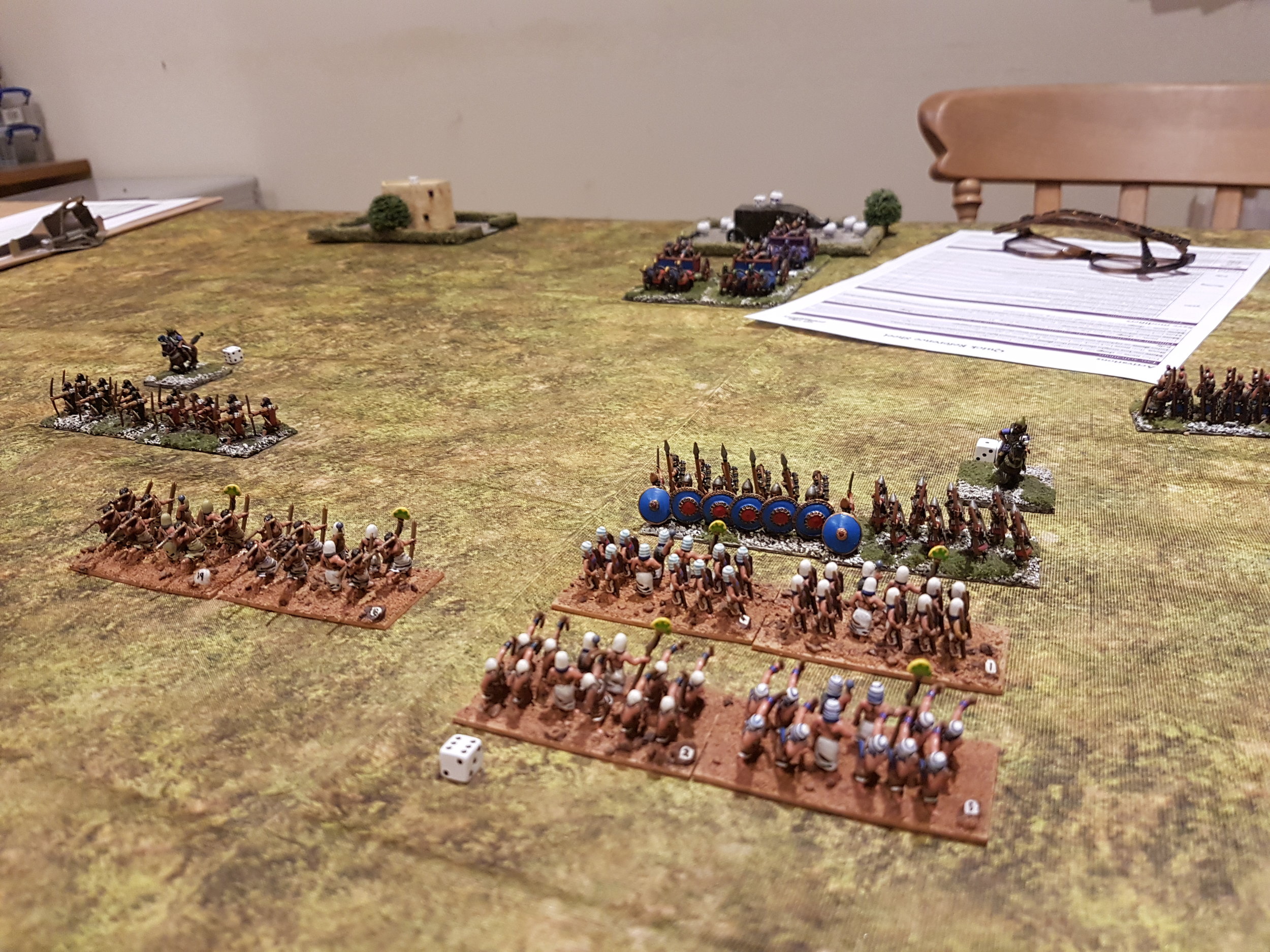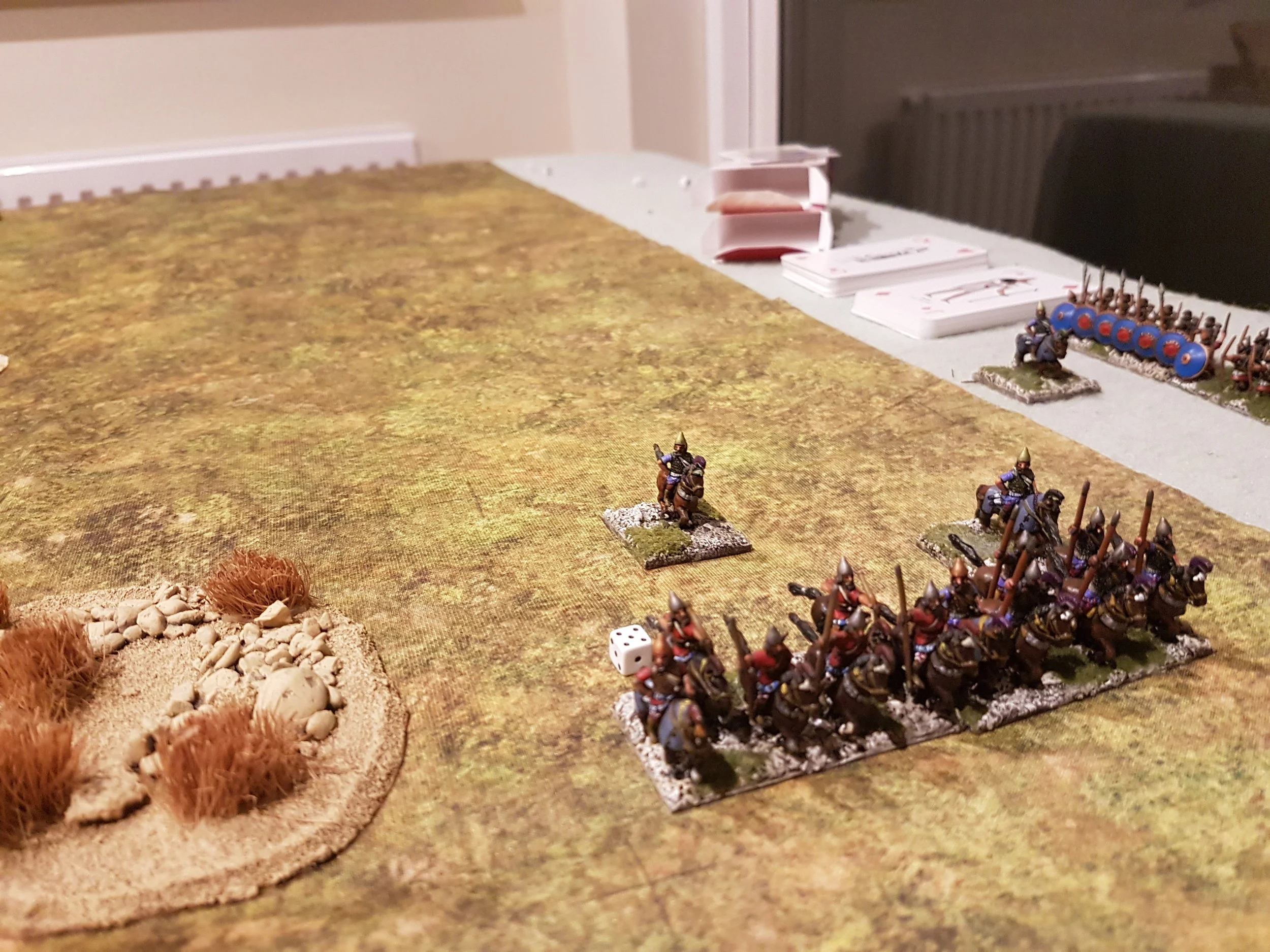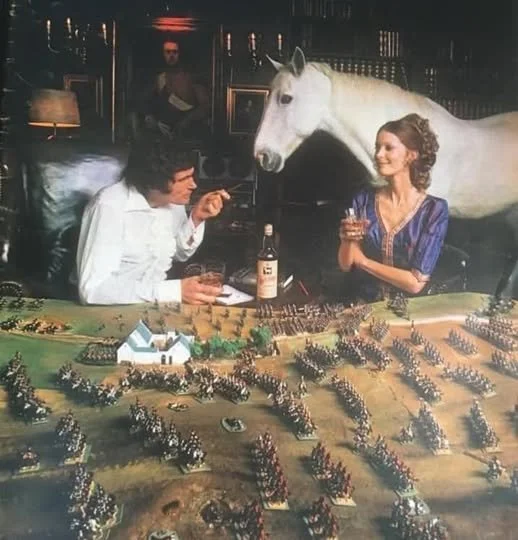First Game of To The Strongest
/Whilst I was up in Edinburgh playing IABSM the other week, I also had the opportunity to watch a game of To The Strongest, a set of quick-play Ancients rules based on drawing playing cards as opposed to rolling dice, and using grid-based movement rather than tape measures. Well it all looked quite fun, and a useful way of getting some of my Ancients figures out onto the table for the first time in years.
I’d rather have been playing my own Vis Bellica rules, obviously, but the fashion these days is for quick-play, so if I want to get some games in with the group I usually play with, it was TTS all the way!
A quick trip to the BigRedBat’s shop (you can click on the pic of the front cover to go there) and I purchased a copy of the rules and a suitably grid-ed mat. Army lists are free to download, along with a rather handy army calculator that does all the hard work of picking your force for you. Everything arrived quickly and correctly, so all in all a jolly good start to the TTS experience.
All my 15mm figures are based as elements for Vis Bellica, but I soon realised that combining two VB bases would give me a suitable TTS unit with a frontage of 12cms, perfect for the 15cm grid mat I had bought, and allowing me to show a unit as disordered merely by putting the two VB bases at angles to each other. VB bases with a narrower frontage (elephants and light chariot units) could be fielded as four VB narrow bases.
Formed and disordered units for TTS, along with a dice to mark ammo. Note grid intersection just to the right of the ordered spearmen.
What this would also mean, of course, is that I effectively needed double the size of a normal VB army for a TTS force…so double the number of figures!
Luckily, I went big when I bought my VB armies, so was able to field a force of New Kingdom Egyptians and Assyrians without the need to do anything except remove a bit of dust from the figures.
I did however realise that my hoplite and Macedonian armies were going to be short a pikeblock or four: TTS phalanxes are double depth, so I’d need to field them as four VB bases, and even I didn’t have a four-times-normal sized Greek or Macedonian force. The same was true for Celtic warbands, so my Ancient Brits might also be short of a few warrior units. Ah well, if I like the rules I’ll just have to buy some more figures…
Ed.’s Wife’s Note: Any excuse! He bought them already, before he even tried TTS out.
The Cast
TTS is advertised as a game ideal for novice gamers, so bearing that in mind my opponent for my first game was my ten-year old daughter. As it was game one, and she has never really wargamed before, I set up all the figures before we started:
The Egyptian (Pharoah Dad)
Command 1:
Attached Senior Heroic Mounted General
Two veteran light chariot units
Two light chariot units
Hero
Camp
Command 2:
Attached Heroic Mounted General
Two spearman units
Two archers units
One axeman unit
One Marines unit
Hero
Camp
Command 3:
Attached Heroic Mounted General
Two units of bowmen
Two units of skirmishers
Hero
Camp
The Assyrians (the Beardless King)
Command 1:
Attached Senior Heroic Mounted General
One unit of veteran 4-horse heavy chariots
Command 2:
Attached Heroic Mounted General
One veteran cavalry unit
One cavalry unit
Hero
Camp
Command 3:
Attached Heroic Mounted General
Four shieldwall units, one veteran and two raw
Hero
Camp
Command 4:
Attached Heroic Mounted General
One unit of bowmen
Two units of javelinmen
Hero
Camp
Each side therefore ended up with 12 victory coins. Each time you lose an asset, you lose one or more coins. Lose all your coins and you lose the battle.
The Game
The game began with a strong Egyptian advance across their entire front. Activation of units seemed very simple and easy to understand, and choosing which units to try and activate first and pulling the cards did indeed prove quite fun.
The Assyrians also moved forward strongly, with their cavalry heading straight for the Egyptian chariots seemingly unphased by the superior number of pyramid builders.
I then realised that I had a slight problem. My light chariots, being of the light troops variety, couldn’t charge the Assyrians head on: I could only shoot them and evade their charges whilst trying to get around their flanks and rear. Unfortunately, the Assyrian cavalry were just as fast as my chariots, and one unit of veteran chariots was soon no more than a pile of kindling and dog food, with the mildly exerted Assyrian Guard cavalry sailing forward looking for their next victims.
The chess game between the two units of Assyrian cavalry and three remaining Egyptian chariot units would take up most of the rest of the game, as I tried frantically to stop his cavalry running over my light troops whilst looking for a way through to his flanks, rear and camps. The Beardless King was, however, equally determined: forming an inexorable line of cavalry that just kept of coming.
Meanwhile, in the centre, the two lines of infantry had come together: first the arrows flew in either direction, then the units got stuck into each other. The Assyrians had the advantage of having combined units of spear and bow-armed infantry, but I had stacked my spearmen and bow units two to a hex (i.e. a unit of archers behind a unit of bowmen) with some success.
Unfortunately, just as I was about to firmly win in the centre, the Assyrians committed their reserve into the combat (at my suggestion, I hasten to add!) slamming a single unit of veteran four-horse heavy chariots into my exposed flank.
But it was actually on my left flank that I lost the battle!
There, each sides’ light units had clashed, with victory going to the Assyrians. I had already committed my reserve to prop up the chariots, and one pesky unit of Assyrian javelinmen broke through my light troops and managed to sack not one, but two of my camps!
The enormous cost in Victory Coins of losing two camps was too much for my Egyptians, and they fled the field.
A somewhat embarrassing defeat!
Post-Match Analysis
Well that was actually a jolly fun game. We got loads of the mechanics slightly wrong, but know what to do right next time.
The figures looked good on the table, and I am pleased that Simon Miller, the author of TTS, shares my belief in the importance of holding your line of battle strong whilst seeking to punch through or outflank that of your opponent, exactly as VB does. This wasn’t a question of a fight between a series of individual units, but two armies clashing, with victory going to the army that held its overall shape for longest.
I shall definitely have more games of To The Strongest, and am now very tempted by the English Civil War version: For King and Parliament. I’d better get those extra hoplites and pikemen painted up first though!
Here are a few more pics of what turned out to be an excellent game:





